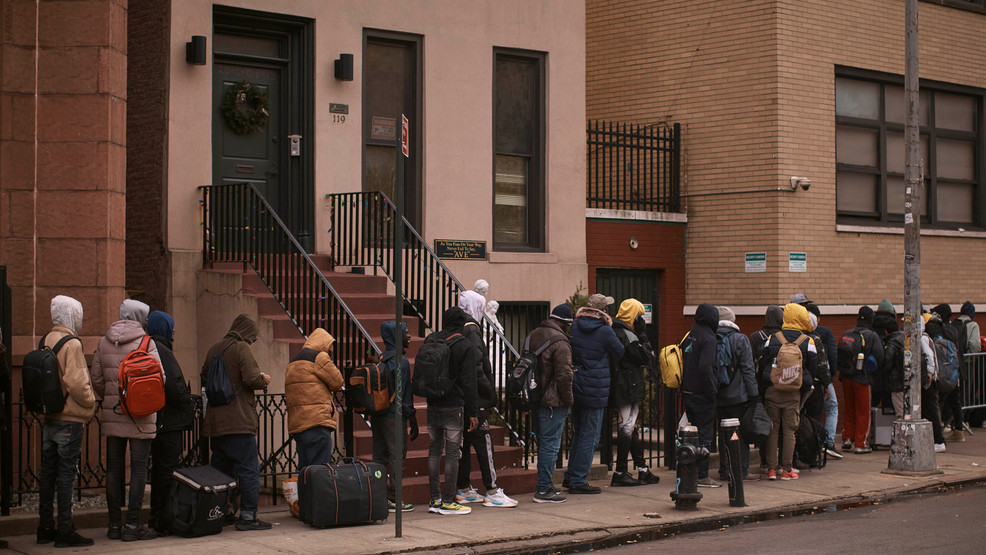WASHINGTON (TND) — Leaders of several American cities are sounding alarm bells that they've now reached a breaking point.
"We're here today because we really don’t have a choice," said Gov. Maura Healey, D-Mass., Wednesday after touring a recreational center in Roxbury, Massachusetts ahead of immigrant families' arrival.
But she is facing pushback from residents there, for converting it into a migrant shelter.
"We sympathize with them. We as people in our community, we love. But sometimes we love so much that we spite our own selves," Clifton Braithwaite, a community activist told WBZ.
Some are furious they could lose the facility for the next four months, which serves as a second home for senior citizens and neighborhood kids alike.
Meanwhile, it's all unfolding as residents watch other aspects of daily life grow more difficult.
"There’s a concern that their local resources are going to be depleted so I think it’s shedding light on what it really means to be a sanctuary city," Murphy told The National Desk.
In New York City there are similar challenges, where a tent camp is growing by the day outside of the major shelter there.
"We don’t have anywhere to live and there’s no work," one man said.
It's a reality many advocates have criticized, including David Giffen, Executive Director of the Coalition for the Homeless.
Chicago has already spent more than $156 million to pay for migrants.
Denver has spent more than $40 million.
New York City has reported spending $2 billion, projecting $12 billion more if things don’t change.

 ktul.com
ktul.com
"We're here today because we really don’t have a choice," said Gov. Maura Healey, D-Mass., Wednesday after touring a recreational center in Roxbury, Massachusetts ahead of immigrant families' arrival.
But she is facing pushback from residents there, for converting it into a migrant shelter.
"We sympathize with them. We as people in our community, we love. But sometimes we love so much that we spite our own selves," Clifton Braithwaite, a community activist told WBZ.
Some are furious they could lose the facility for the next four months, which serves as a second home for senior citizens and neighborhood kids alike.
Meanwhile, it's all unfolding as residents watch other aspects of daily life grow more difficult.
In an interview with Fox News Thursday, she said when hers and other cities were designated “sanctuary cities,” they may not have thought through how much support would be needed.We have schools now, teachers who have class sizes that are increasing, students that don’t have the supports to help. We have hospitals that patients are in the hallway right now," said Democratic At-Large Boston City Councilor Erin Murphy.
"There’s a concern that their local resources are going to be depleted so I think it’s shedding light on what it really means to be a sanctuary city," Murphy told The National Desk.
In New York City there are similar challenges, where a tent camp is growing by the day outside of the major shelter there.
"We don’t have anywhere to live and there’s no work," one man said.
It's a reality many advocates have criticized, including David Giffen, Executive Director of the Coalition for the Homeless.
Questions about making ends meet also loom large for big cities.It's insanity for the U.S. Government to welcome people from other countries into the United States and say, 'Come in, but by the way you can't work.' What are they supposed to do?
Chicago has already spent more than $156 million to pay for migrants.
Denver has spent more than $40 million.
New York City has reported spending $2 billion, projecting $12 billion more if things don’t change.

New reality of what it means to be a 'Sanctuary City' hitting home for residents
Leaders of several American cities are sounding alarm bells that they've now reached a breaking point.
 ktul.com
ktul.com












